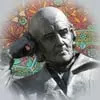[In "Section 2" of "Organon of Medicine" Dr. Hahnemann said,
The highest ideal of cure is rapid, gentle, and permanent restoration of the health, or removal and annihilation of the disease in its whole extent, in the shortest, most reliable, and most harmless way, on easily comprehensible principles. (collection)]
Explanation: (Easily comprehensible principles) (Expert Homeopathy: Dr. Anutosh Chakraborty)
The last but not the least criteria for the highest ideal of cure is that the therapeutic practice must be based not on guesswork, empiricism but on fixed principles that are simple and intelligible. Only that is simple, which is true. Hence, a system of medicine should be based on nature's laws, be true, be simple, to be easily understood.
To lay down certain definite principles in treatment as elaborated in "Organon of Medicine" was a historic need. Earlier medical treatment had been based principally on hypothesis and opinion. There was no definite law of prescribing for the sick. The practice of medicine was chaotic.
Each physician-prescribed according to his own ideas or those of some "shining light" of the profession. But Dr. Hahnemann was the first who perceived that the practice of medicine to be successful must be guided by law. The science of medicine must be built on a true foundation. His 'Organon of Medicine contributes nothing beyond a series of such thinking consistent with the facts in illness and in the medicine rather than what one may think or guess of them.
The highest Ideal of Cure should be:
Rapid
Gentle
Permanent
Restpratopm pf health or, Removal and annihilation of the disease in its whole extent
Shortest
Mostly harmless
Easily comprehensible principles
[N.B. It is noteworthy that these criteria for an ideal cure were first advocated by a Greek physician named Asclepiades (124 B.C.) who said: "cito, tuto et jucunde". This means: "Disease should be treated speedily, safely and agreeably". The truth has been perceived through ages but the world has to wait for about two thousand years till Dr. Hahnemann succeeded in materializing his dream.
The concept of an ideal cure finds its parallel in the Charaka - Samhita, thus: That method of treatment which annihilates an existing disease - syndrome but gives rise to another new set of symptoms is not the method of an ideal cure, whereas that method which removes a symptom - complex without exciting any other in its stead, is the ideal one]


Post a Comment